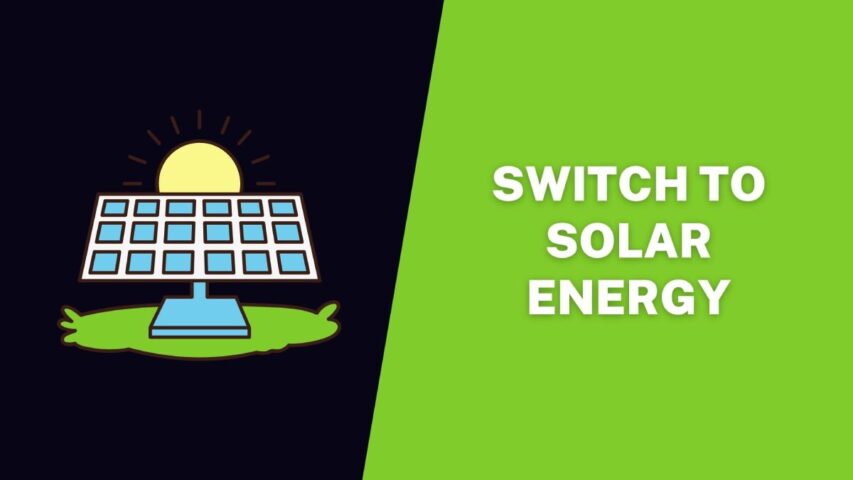With a population of over 1 billion people and a fast-rising economy, India is experiencing massive energy demand. In terms of power generation and consumption, the country is ranked sixth globally. Electricity output has increased over time, but we cannot ignore that the country’s population has grown as well.
Coal generates the bulk of the country’s electricity (53%), and the country’s coal reserves are predicted to run out by 2040-50. Villages house more than 72% of the population, although half of them are without electricity. India’s a long past time prioritizing energy efficiency, conservation, and renewable energy sources. The most effective method to fulfill this increased need for power is solar energy.
India’s Solar Energy
The country’s geographic position is advantageous for solar energy generation. This is because India is a tropical nation that receives solar radiation virtually all year, averaging 3,000 hours of sunlight. This is the equivalent of almost 5,000 trillion kWh. As a result, almost every square meter in India gets 4-7 kWh of solar energy. This equates to 2,300–3,200 hours of sunlight each year.
Solar Energy’s Benefits in India
The following are some of the benefits of solar energy that make it particularly ideal for India:
- This is an infinite energy source and India’s best non-renewable energy substitute.
- Solar energy is safe for the environment. It does not emit CO2 or other polluting gases into the atmosphere when in use. As a result, it is ideal for India, which is one of the world’s most polluted countries.
- Solar energy is appropriate for rural communities in India since it can be utilized for several functions such as heating, drying, cooking, and power. It may also be found in automobiles, planes, huge powerboats, satellites, calculators, and a variety of other devices, making it ideal for urban dwellers.
- Solar energy is limitless. Solar energy is the best alternative way of power generation in an energy-scarce country like India, where electricity generation is expensive.
- Solar energy does not require a power or gas grid. A solar power system may be set up in almost any place. Solar panels are simple to install in homes. As a result, it is relatively economical compared to other energy sources.
India’s Solar System Development
Solar energy generation has a lot of potential in India. The country’s geographic position contributes to its ability to generate solar energy. The rationale is that India is a tropical country that receives radiation almost all year, averaging 3,000 hours of sunlight.
This has a capacity of more than 5,000 trillion kWh. Nearly every part of India receives 4-7 kWh of radiation per square meter. This equates to 2,300–3,200 hours of sunlight each year. Hence the states need to switch n to solar energy to enjoy saving a lot of money on electricity expenses.
What is the mechanism of solar energy, and why should we use it?
PV modules absorb sunlight and convert it into a usable electrical current. Solar energy can be used wherever since the sun shines worldwide. Solar modules are low-maintenance and have a guaranteed service life of 25 years or more because they have no moving parts. As you can see, there are a lot of options. You can use solar energy in the best form without any hassles at your home. Also, it is loved by the business owners as electricity bills are reduced to a great extent.
Electricity bill reduction
Solar panels at home or the office might help you save money on your electric bill. Each family, of course, is unique, and each requires a particular sort of solar panel. You can enjoy saving a lot of money and use it on other luxurious things. Also, the environment is saved from a lot of damage using this energy. Why not let your planet breathe perfectly and reduce global warming by switching to solar power.
Climate-friendly in India
India is in a perfect geographical location for obtaining plenty of tropical sunlight. India has one of the greatest solar energy harvesting conditions globally, with about 300 bright days and clear skies per year. Installation does not necessitate any additional space. Because the system is mounted on the rooftops of business or residential structures,
Increases access in rural and distant places
There are still numerous locations in India, both urban and rural, where sufficient power access is lacking. Rooftop solar models are the most cost-effective and stable energy source in such places since they are both cost-effective and safer than other options such as diesel generators.
Solar projects often require a large amount of land to install panels and other equipment. Thus this method makes use of existing space. Rooftop solar panel installations use existing space on a building’s roof, reducing the need to purchase additional land. The panels also protect the roof of the building or industrial shed where they are installed.
Low yearly maintenance and recurrent expenses
Because there are no moving components or fuel, the rooftop solar model requires extremely little annual maintenance and ongoing expenditures. In the case of off-grid installations, the system requires yearly module maintenance and battery replacement every 3-5 years.
Green energy source
Compared to traditional energy sources, the solar rooftop model poses far fewer pollution threats to the environment. They don’t generate power using fuel that releases toxic fumes, and they don’t make any noise. Adopting the methods will help you with perfect solutions in many manners.
Conclusion
If you are also looking to install a solar plate, you must get in touch with Loom Solar. It is one of the leading companies that can help you out by switching to solar energy.


